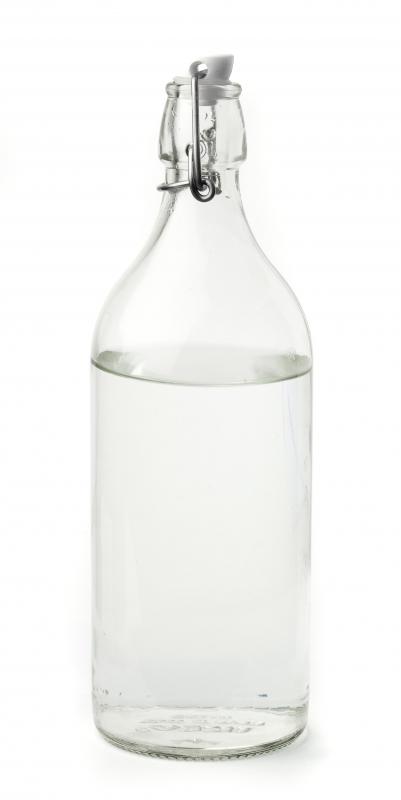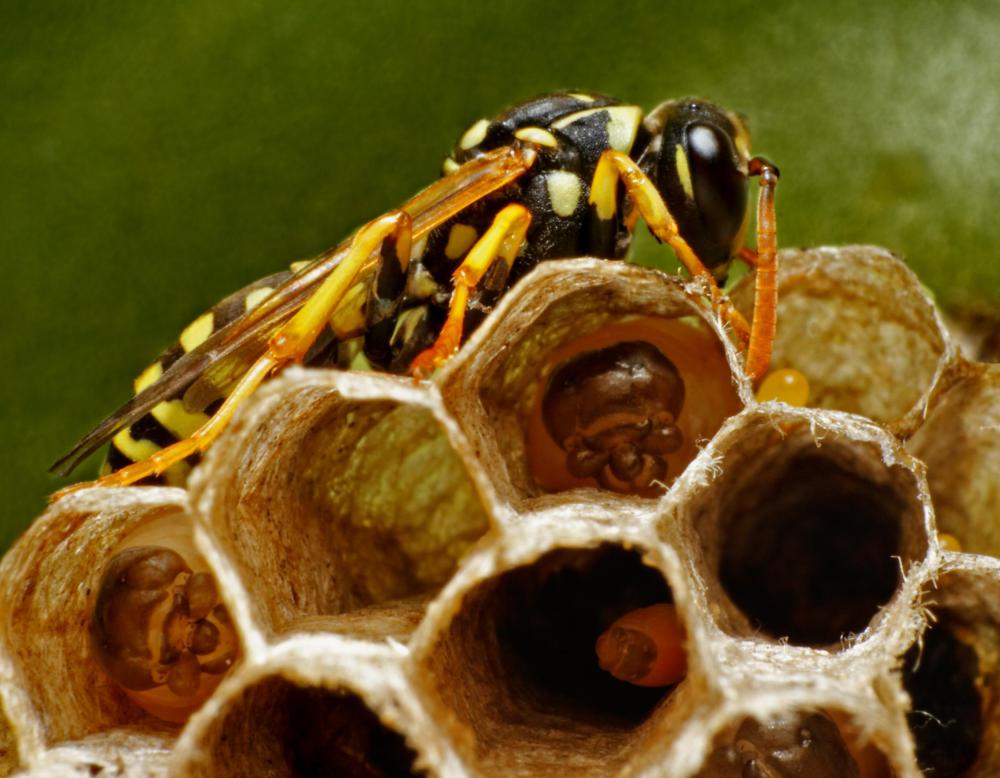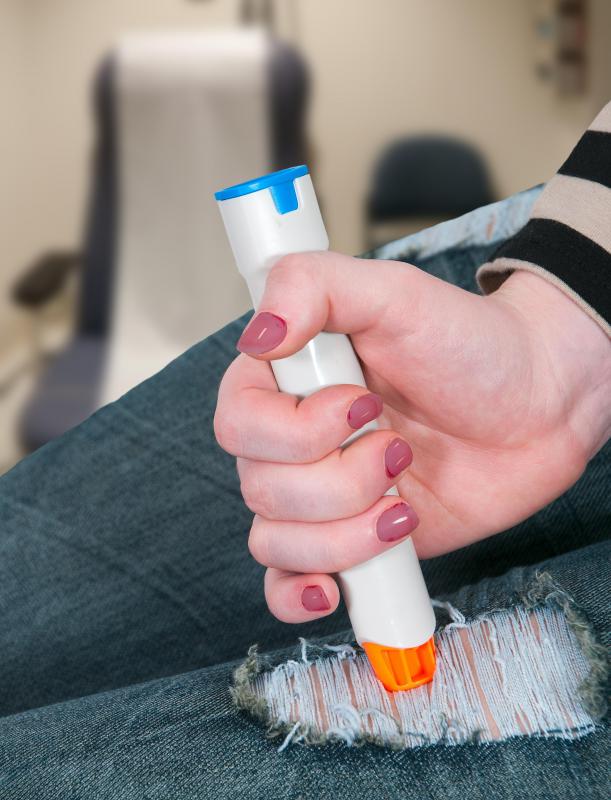At TheHealthBoard, we're committed to delivering accurate, trustworthy information. Our expert-authored content is rigorously fact-checked and sourced from credible authorities. Discover how we uphold the highest standards in providing you with reliable knowledge.
How do I Treat a Wasp Sting?
A wasp sting that results in mild reactions can be treated with meat tenderizer, vinegar, baking soda, or ice. Other treatments may include the application of oral or topical steroids. Mild reactions to a wasp sting may involve swelling, redness, itching, or irritation at the site where the person was stung.
People who are highly allergic to a wasp sting may suffer from more severe reactions. For example, if a person experiences confusion, racing heartbeat, hives, swelling of the throat or lips, breathing difficulties, disorientation, or faintness, it's important that he or she visits the hospital emergency room immediately. If the victim does not seek immediate medical attention, he or she can die. People with known allergies to wasp stings may sometimes be prescribed an Epi-Pen™, a type of prescription medication that helps people avoid negative allergic reactions to bee or wasp stings.

Wasps are insects possessing slender bodies with narrow waists and legs shaped like thin cylinders. Their skin has a smooth, shiny appearance. The most common types of wasps that humans notice are paper wasps, yellowjackets, and baldfaced hornets. Wasps are predatory insects that eat other insects, feeding them to their young. Crickets, caterpillars, flies, and other insect nests are typical sources of food for a wasp.

During late summer and fall, the queen wasp does not lay eggs. For this reason, the wasps focus on gathering sources of carbohydrates and sweet substances. They may behave more aggressively toward humans, flying around human food and drink during picnics and other outdoor activities.
Wasps live in wasp nests built from a papery substance comprised of wood fibers mixed with saliva. Yellowjackets will sometimes build a nest inside attics or recesses in walls. They may also choose to make their nests in shrubs, trees, and under eaves.

The most common place they build their nests is in an old rodent burrow. Paper wasps usually build their nests under a horizontal surface such as eaves, limbs, overhangs, and structural supports within a garage, barn, shed, or attic. Baldfaced hornets will make their nests in trees, under the eaves, or tucked along the edges of buildings.
In order to prevent a wasp sting, destroy wasp nests by using a spray that kills stinging insects. These types of aerosol sprays can spray upwards between 15 and 20 (4.6 m. and 6.1 m.) feet. The person spraying the nest should never stand directly beneath it. It's often more prudent to hire a professional exterminator to remove the nest.

Homeowners should avoid trying to burn or flood a wasp nest as this will only anger the wasps and encourage them to attack. It's also important to avoid swatting wasps as this can cause them to sting. Wearing light-colored cotton clothing is a sensible way to avoid attracting wasps.
AS FEATURED ON:
AS FEATURED ON:















Discussion Comments
I looked at the wreath on my home's front door to add red, white and blye ribbons for July 4th. The scream which came from my toes could be heard for a mile. There was a nest of wasps in that wreath
Both hands swelled to double their size and red streaks went up my forearm. My sister-in-law was visiting for the Fourth and drove me 12 miles to the hospital. I was in the ER hookedup for 3 hours. I would be dead, were it not for a guest in my home!
Treat wasp stings with acid. Vinegar works well, or lemon juice.
Treat bee stings with baking soda.
Wasp stings aren't barbed so they don't leave the stinger in your skin. honeybee stings are, so it's important to remove the stinger and attached venom sac by swiping off using a blunt object like the edge of a credit card. don't try to use tweezers; chances are you'll squeeze more venom into the wound.
Don't get them confused, they are very different animals.
With the beginning of summer comes the blooming of trees, gardens and flowers, which in turn attracts bees and wasps of all kinds. But that is not the end of the worry of a sting. Many stings take place during the fall months. Reason being, bees and wasps are cold blooded insects and they linger around people in order to absorb the body heat of humans, therefore increasing the chances of getting stung.
When I was a child, I was stung by a wasp in the center of my back. It hurt terribly, and I couldn't reach it to get it out/off (I think it was stuck in my clothing). To this day, I am terrified of getting stung again.
Post your comments